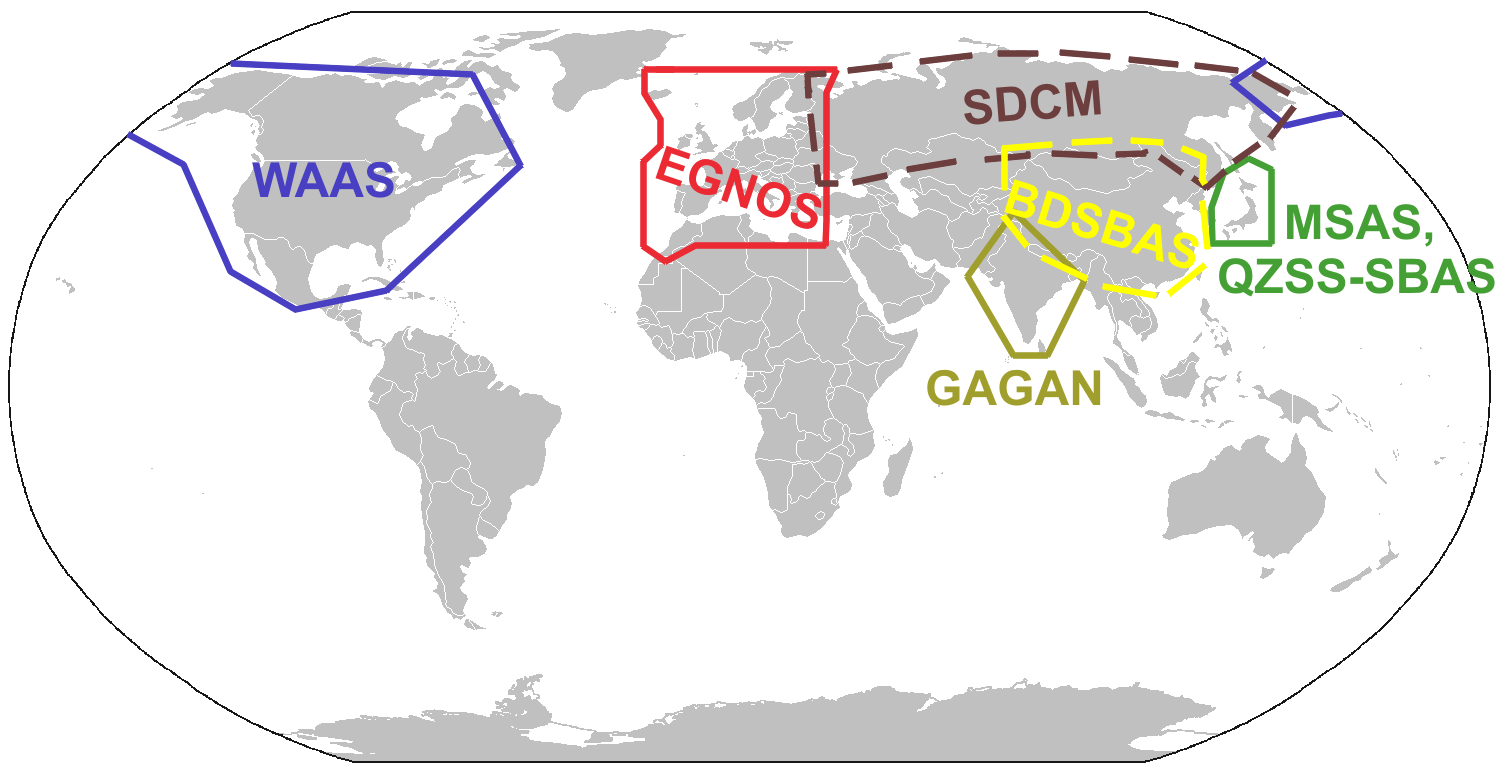
GNSS augmentation
Augmentation of a global navigation satellite system (GNSS) is a method of improving the navigation system's attributes, such as precision, reliability, and availability, through the integration of external information into the calculation process. There are many such systems in place, and they are generally named or described based on how the GNSS sensor receives the external information. Some systems transmit additional information about sources of error (such as clock drift, ephemeris, or ionospheric delay), others provide direct measurements of how much the signal was off in the past, while a third group provides additional vehicle information to be integrated in the calculation process.
Satellite-based augmentation systems (SBAS) support wide-area or regional augmentation through the use of additional satellite-broadcast messages. Using measurements from the ground stations, correction messages are created and sent to one or more satellites for broadcast to end users as differential signal. SBAS is sometimes synonymous with WADGPS, wide-area differential GPS.[1]
The SBAS that have been implemented or proposed include:
The augmentation may also take the form of additional information from navigation sensors being blended into the position calculation, or internal algorithms that improve the navigation performance. Many times the additional avionics operate via separate principles from the GNSS and are not necessarily subject to the same sources of error or interference. A system such as this is referred to as an aircraft-based augmentation system (ABAS) by the ICAO. The most widely used form of ABAS is receiver autonomous integrity monitoring (RAIM), which uses redundant GPS signals to ensure the integrity of the position solution, and to detect faulty signals.[11]
Additional sensors may include: